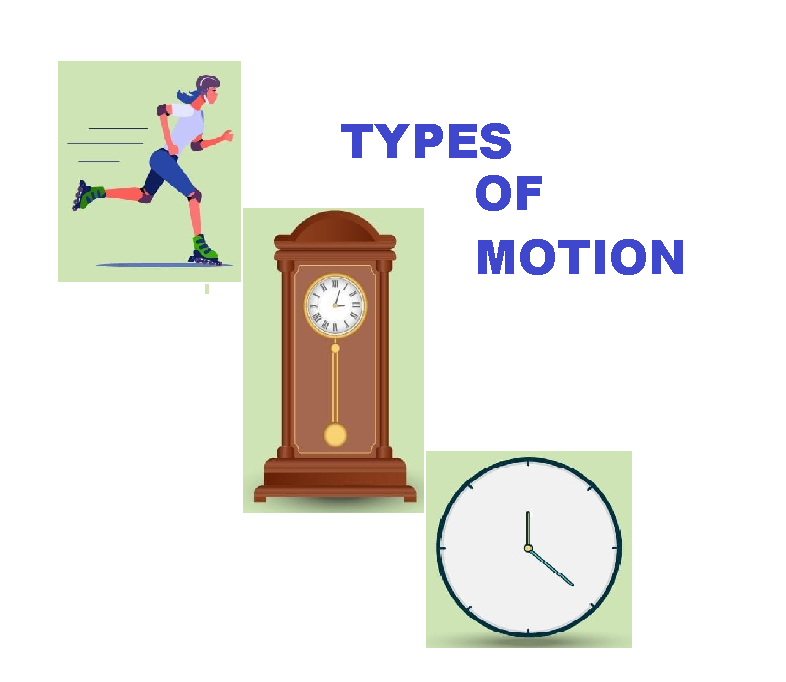(a) Rectilinear motion: When the translation motion takes place along a straight line then the motion is called rectilinear motion. Example – A ball is falling vertically downward from a height in absence of resistive force.

(b) Curvilinear motion: When the translation motion takes place along a curved path then the motion is called curvilinear motion. Example – arms chair in a vertical merry-go-round or roller coaster.

(ii) Rotational motion: A body has rotational motion if it revolves around a fixed line called axis of rotation or a fixed point. All the particles constituting the body move simultaneously along concentric circles having their centres on the axis of rotation. Such motion is called circular motion. Motion of earth around sun or rotations of machine wheel etc. are the example of rotational motion. A particle on the wheel rotates in a circular path about the axis of rotation represents the circular motion.

(iii) Vibrational motion: A body has vibrational motion if it moves to and fro after regular interval of time about a fixed point is called the mean position. Example – Motion of a pendulum of a wall clock.
(iv) Periodic motion: The motion which repeats itself at a regular interval of time is called periodic motion. The time interval for which the motion repeats is called time period. Example – Motion of a planet around sun.
(v) Simple harmonic motion: When a particle to and fro about a mean position in a regular interval of time and its acceleration is directly proportional to its displacement and the direction of acceleration and displacement are always opposite then the motion is called simple harmonic motion. Example – Motion of a spring in absence of resistive force.
